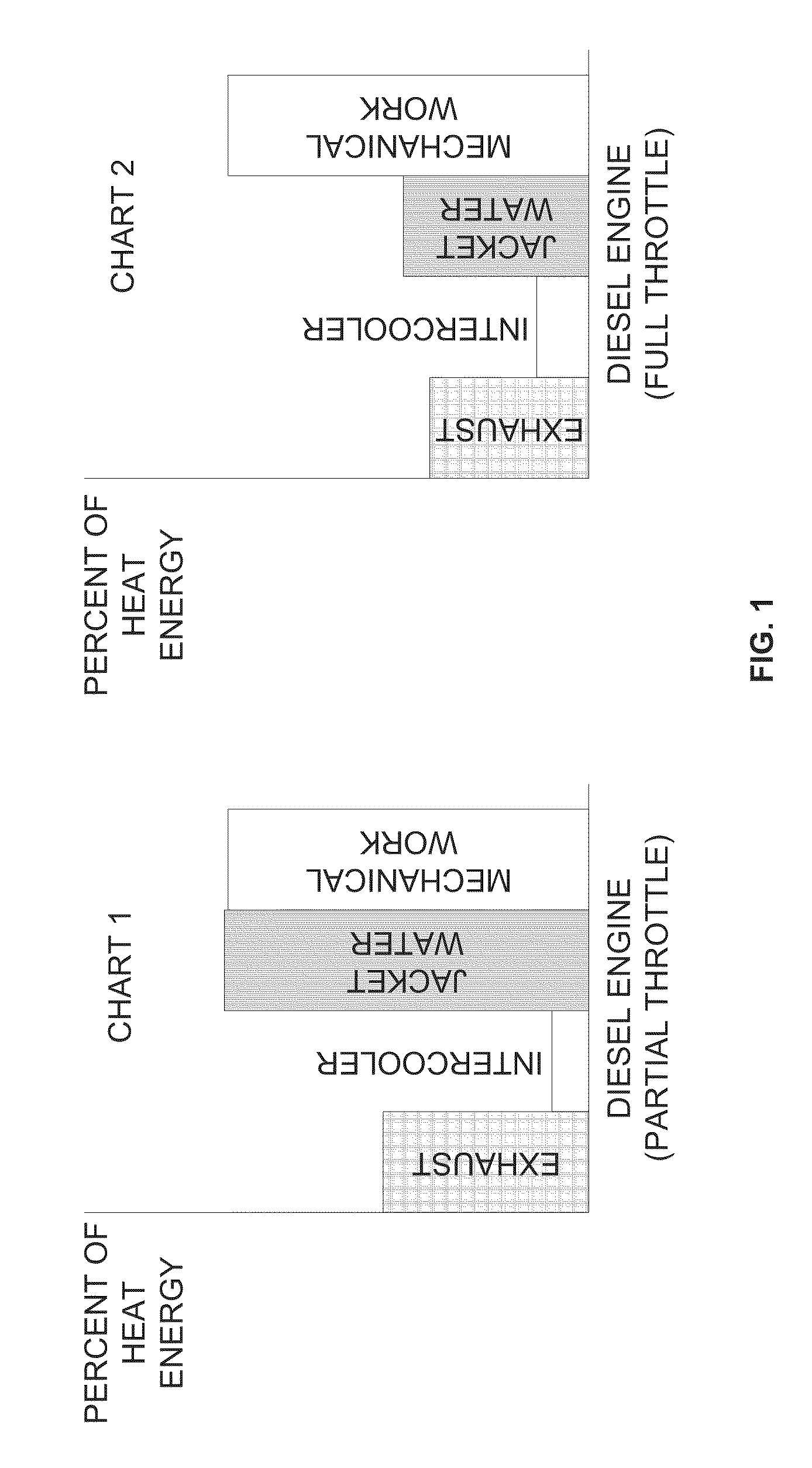Waste heat recovery system
a heat recovery system and waste heat technology, applied in steam engine plants, machines/engines, mechanical equipment, etc., can solve the problems of increased retail price, increased cost increased costs of power generating systems, and increased costs of vehicles
- Summary
- Abstract
- Description
- Claims
- Application Information
AI Technical Summary
Benefits of technology
Problems solved by technology
Method used
Image
Examples
Embodiment Construction
[0034]To facilitate an understanding of the present disclosure, a number of terms and phrases are defined below:
[0035]Heat engine: A combination of components used to extract useful energy from one or more heat sources.
[0036]Internal combustion engine (ICE): A device that produces mechanical power by internally combusting a mixture of atmospheric air and fuel. Among others, types of ICEs include piston operated engines and turbines. Piston operated engines may be spark or compression ignited. Fuels used by ICEs include gasoline, Diesel, alcohol, dimethyl ether, JP8, biodiesel, various blends, and the like.
[0037]Rankine cycle: A thermodynamic cycle used to create work from heat. It is accomplished by pressurizing a working fluid, heating it so that it at least partially vaporizes, and then expanding it through an expander to extract heat energy. After expansion, the working fluid is condensed again to run through the cycle. The Rankine cycle described in this application is a closed ...
PUM
 Login to View More
Login to View More Abstract
Description
Claims
Application Information
 Login to View More
Login to View More - R&D
- Intellectual Property
- Life Sciences
- Materials
- Tech Scout
- Unparalleled Data Quality
- Higher Quality Content
- 60% Fewer Hallucinations
Browse by: Latest US Patents, China's latest patents, Technical Efficacy Thesaurus, Application Domain, Technology Topic, Popular Technical Reports.
© 2025 PatSnap. All rights reserved.Legal|Privacy policy|Modern Slavery Act Transparency Statement|Sitemap|About US| Contact US: help@patsnap.com



